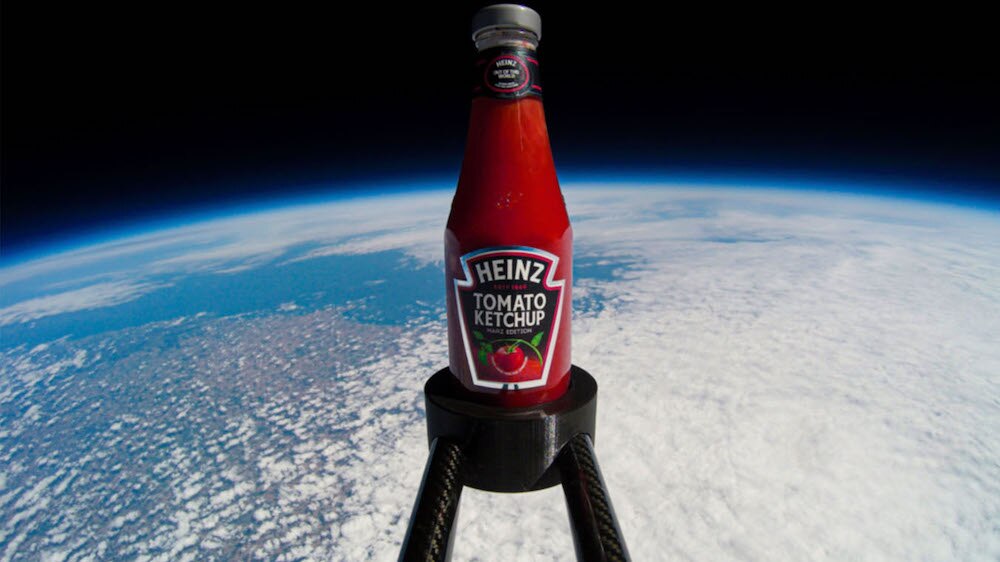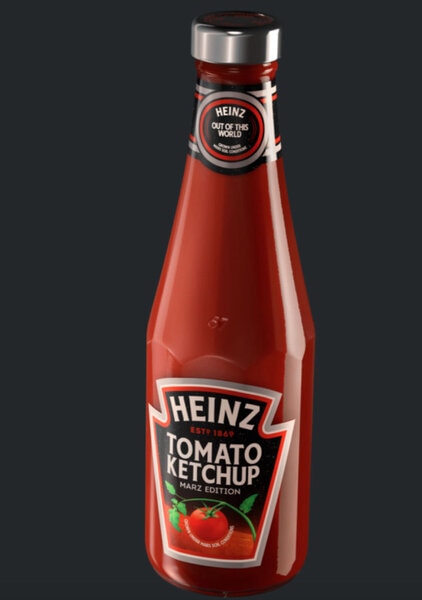Create a free profile to get unlimited access to exclusive videos, sweepstakes, and more!
Martian ketchup? Heinz has gotten this close, and yes, it really is edible
Martian tomatoes? Almost—Heinz has now created ketchup from tomatoes grown in a simulation of Mars.

Humans have a long way to go until our species lands on Mars — but what will be on the menu for Mars-tronauts?
If you can grow it on Mars, you can eat it on Mars. The problem is that things which thrive in Earth’s soil may not be able to tolerate the regolith of the Red Planet. Never mind the radiation. This is why Heinz (the same ketchup you’ve known forever) took one giant leap for space food when the company embarked on a two-year mission to grow tomatoes in the most realistic simulated Martian conditions possible, right here on Earth.
Astrobiologists at the Aldrin Space Institute at Florida Tech, led by Dr. Andrew Palmer, were able to create an analog of Martian regolith, which is definitely not soil as we know it. They successfully grew tomato plants that yielded fruit. Most experiments with plants that grow on Mars have been short-term undertakings that either did not involve plants which produced fruit or didn’t go all the way to see if it was even possible. That has now changed.
“We created the ‘Redhouse’—our Martian greenhouse, but on Earth,” Palmer told SYFY WIRE. “We recreated the light, temperature and regolith conditions for the most accurate Martian environment available to us and is the standard for simulation experiments.”
Simulating exact Martian conditions was one of the most challenging aspects of the experiment for Palmer and his team. Nights and days in the Redhouse were aligned with those on Mars, and artificial lighting was manipulated accordingly, as were temperatures. It is around 82.4 degrees during a Martian day, or sol, which is around 37 minutes longer than a day on Earth, and 71.6 degrees at night. Another challenge was the scale of the project. It was meant to investigate what food production on Mars over an extended period of time would possibly be like.
The regolith simulant used was originally developed by the Extraterrestrial Materials Simulation Laboratory at NASA’s Jet Propulsion Laboratory (JPL). Samples of soil found in a basalt quarry in California’s Mojave Desert were examined in the JPL lab. It was close to Martian regolith. Mars Mojave Simulant was made largely of basalt, a volcanic rock made of pyroxine and olivine. Other minerals in the simulant that are also dominant on Mars, which erupted with volcanoes up to 300 million years ago, are iron oxide, silicon dioxide, magnesium, feldspar and magnetite.
“While Martian regolith contains the macro and micronutrients plants require for growth, these are not always in forms that are available to plants,” said Palmer. “On Earth, there are fungi and microbes which help condition soil and interact with plants to make this process easier.”
JPL eventually developed the simulant JSC Mars-1 and then the even more accurate MMS-2, which includes perchlorates, which are volatiles that evaporate easily and are now known to be everywhere on the surface of Mars. No genetic engineering of the plants was necessary other than the 80 years Heinz has put into breeding ketchup tomatoes. The first phase of the project involved determining which seed variant would have the best chance at making it in simulated Martian regolith, which is devoid of organic materials, and the brutal radiation that hits Mars.
So how did it taste? While you can’t buy Heinz Tomato Ketchup Marz edition, trust those who have actually tried it. Former NASA astronaut Mike Massimino, the ambassador for Marz edition, has admitted that Heinz Ketchup was what got him through the often bland freeze-dried meals on board the ISS. Anyone who has tried the (almost) Martian version is positive you would not be able to taste the difference.
“The ambition of the project was to ensure that Heinz Ketchup can be enjoyed for generations to come,” a Heinz spokesperson also told SYFY WIRE. “It said was to see if we could grow tomatoes with all the properties to make our Heinz Ketchup on Earth, which we did.”



























